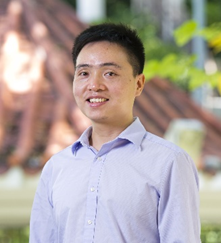应我校化工与化学学院邀请,香港城市大学谭超良教授将于2022年7月4日上午9:30开设线上讲座,具体信息如下:
报告人:谭超良
联系人:齐殿鹏
报告题目:Two-Dimensional Nanomaterials and Devices
报告时间:2022年7月4日,上午9:30
腾讯会议会议 ID:124 997 053
本次报告谭超良教授将分享关于二维纳米材料与器件的独到见解,欢迎全校师生踊跃参加
主讲人简介:
谭超良博士,香港城市大学电机工程系助理教授。博士毕业于新加坡南洋理工大学(导师张华教授),博士后工作于加州大学伯克利分校(导师Ali Javey教授)。他长期从事二维纳米材料与器件、二维复合纳米材料及层状纳米材料的结构工程。共发表论文超过140篇,总引用超过21000次,个人H因子65。其中第一或通讯作者论文超过50篇,包括Nat. Nanotechnol.、Nat. Rev. Mater.、Chem. Rev.、Chem. Soc. Rev.、Nat. Commun.、J. Am. Chem. Soc.、Angew. Chem. Int. Ed.、Adv. Mater.、Adv. Funct. Mater.、ACS Nano、Small等。

Dr. Tan Chaoliang is an assistant professor at the Department of Electrical Engineering, City University of Hong Kong. He graduated from Nanyang Technological University, Singapore (mentor Prof. Zhang Hua), and worked as a postdoctoral fellow at the University of California, Berkeley (mentor, Prof. Ali Javey). He has long been engaged in the structural engineering of two-dimensional nanomaterials and devices, two-dimensional composite nanomaterials and layered nanomaterials. He has published more than 140 papers, with a total of more than 21,000 citations and a personal H-factor of 65. Among them, the first or corresponding author of more than 50 papers, including Nat. Nanotechnol., Nat. Rev. Mater., Chem. Rev., Chem. Soc. Rev., Nat. Commun., J. Am. Chem. Soc., Angew. Chem. Int. Ed., Adv. Mater., Adv. Funct. Mater., ACS Nano, Small, etc.
He received his B.E. degree (Honors) from Hunan University of Science and Technology (China) in 2009, M.E. degree (Honors) from South China Normal University in 2012, and Ph.D. degree (Summa Cum Laude) from Nanyang Technological University (Singapore) in 2016. He then continued her postdoctoral fellow working at Nanyang Technological University (Singapore) in 2016-2017 and 2019-2020, and at Universtiy of California, Berkeley in 2017-2019. After that, he started his independent research career as Assistant Professor at City University of Hong Kong since 2020. His research interests include growth of 2D materials for electronics and optoelectronics, structural engineering of layered nanomaterials for biomedical applications, 2D material-based flexible engergy and sensing devices and their integrated wearable systems, and synthesis and applications of novel functional 2D materials and composites. Professor Tan won the 2021 National Outstanding Youth Fund (Hong Kong and Macau), was selected as the "Global Highly Cited Scholars" list (Clarivate Analytics) for 4 consecutive years from 2018 to 2021, and was awarded the engineering field published by Stanford University for two consecutive years from 2020 to 2021. "Top 2% Scientists in the World", "Rising Star" of Hong Kong Institute for Advanced Study in 2021, "Rising Scientist" of Journal of Materials Chemistry A in 2021 and "Rising Star" of Small journal; , Adv. Mater., J. Am. Chem. Soc., and other independent reviewers, serving as the editorial board of "Physical Chemistry Letters" and the young editorial board of "China Chemistry Letters".
报告摘要:
Ultrathin two-dimensional (2D) nanomaterials have been one of the hottest research topics in multiple disciplines including condensed matter physics, materials sciences and electronics in last decade owning to their unique physical, chemical and electronic properties and various promising applications. In this presentation, I will present my research progress made on 2D nanomaterials and devices. Firstly, I will briefly introduce my research work on the preparation of novel 2D nanomaterials by combining the chemical vapor transport growth and liquid exfoliation method, and the synthesis of 2D composites by using 2D nanosheets as templates. Secondly, I will present my research work on the construction of high-performance electronic (e.g., transistors, logic gates and circuits) and optoelectronic (e.g., infrared photodetectors) devices based on 2D tellurium (Te nanoflakes and thin films). Thirdly, I will present my research work on the structural engineering of layered nanomaterials (i.e., layered metal oxides and layered double hydroxides) for cancer therapy including photothermal therapy, catalytic therapy and photodynamic therapy.


